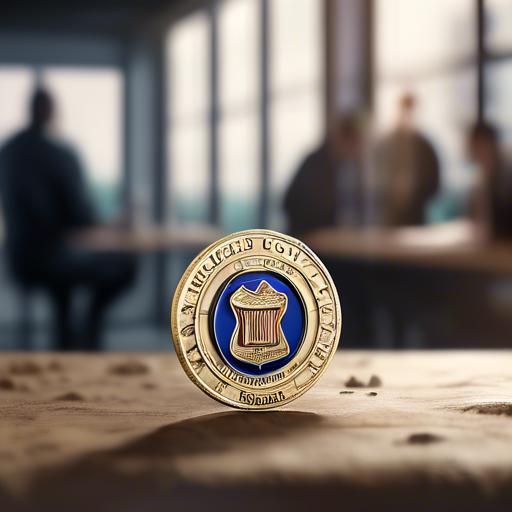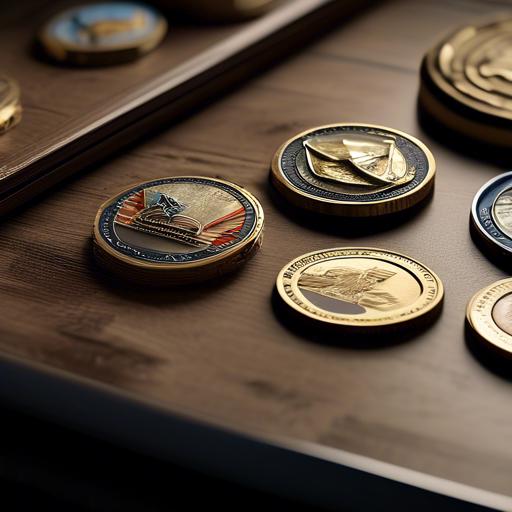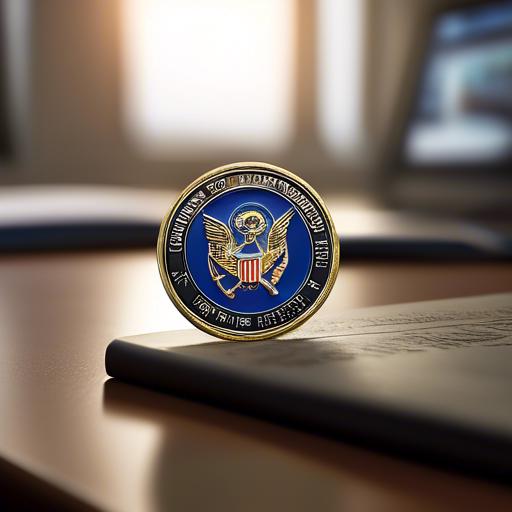In the world of military tradition and commemoration,challenge coins hold a special significance. These small, intricately designed tokens are not simply collectibles, but symbols of achievement, camaraderie, and unwavering dedication. Have you ever wondered how these revered symbols are made? Join us as we explore the intricate process behind the creation of challenge coins and uncover the craftsmanship and precision that goes into each and every one.
– The History and Significance of Challenge Coins
Challenge coins are typically made through a process called die striking, which involves creating a custom design and stamping it onto a piece of metal. The moast common metals used for challenge coins are brass, copper, and zinc alloys. The metal disc is then cut to the desired shape and size before being stamped with the design.
once the design is stamped onto the metal, the coin is plated with a finish such as gold, silver, or antique bronze. This gives the coin a polished look and helps protect the metal from tarnishing. Additional features, such as color fill or epoxy coating, may also be added to enhance the coin’s appearance. the craftsmanship and attention to detail that goes into making challenge coins contribute to their ancient significance and symbolic value.
– The Manufacturing Process of Challenge Coins
Challenge coins are typically made through a detailed manufacturing process that involves several key steps. These unique and collectible coins are often used to commemorate achievements or signify membership in a specific group or association.
One common method for producing challenge coins involves the use of die-casting, where molten metal is poured into a mold to create the desired shape. The coins are then polished and finished with various coatings to enhance their appearance and durability. Another popular technique is 3D printing, which allows for intricate designs and details to be accurately reproduced on the coins.
– Material Selection and Design Considerations
Challenge coins are typically made using a variety of materials, each offering unique characteristics that impact the coin’s overall design and feel. Some of the most commonly used materials for challenge coins include:
– Brass: known for its durability and classic appearance, brass is a popular choice for creating challenge coins that are meant to last for a long time.- zinc alloy: This material is often used for its versatility and ability to be molded into intricate shapes and designs, making it ideal for creating custom challenge coins with detailed artwork.
In addition to selecting the right material for the challenge coin,designers must also consider various design elements to ensure that the coin effectively represents the organization or group it is indeed created for. Factors such as shape, size, color, and finish all play a crucial role in the overall aesthetics of the coin.By carefully considering these design elements, designers can create a challenge coin that is not only visually appealing but also holds important meaning for its recipients.
– Finishing touches and Quality Control Measures
The finishing touches on challenge coins are crucial in ensuring their quality and aesthetic appeal. Once the coins have been struck, they undergo a series of processes to enhance their appearance and durability. This includes polishing the coins to remove any imperfections and applying various finishes such as antique, polished, or sandblasted. Each finish gives the coins a unique look and feel, adding to their collectability and value.
Quality control measures are implemented throughout the production of challenge coins to maintain high standards. Inspections are conducted at various stages of production to ensure that the coins meet specifications and are free of defects. This meticulous attention to detail ensures that only the highest quality coins are delivered to customers. Additionally, the coins are individually inspected before packaging to guarantee that each one meets the stringent standards set by the manufacturer.
Q&A
Q: How are challenge coins typically made?
A: Challenge coins are typically made through a process called die striking or die casting. This involves creating a mold of the design on a metal disc and then striking it with a hammer to create the raised image.
Q: What materials are commonly used to make challenge coins?
A: Challenge coins are commonly made from metals such as brass, copper, or zinc. They can also be crafted from silver, gold, or other precious metals for a more luxurious finish.
Q: Can challenge coins be customized with unique designs?
A: Yes, challenge coins can be fully customized with unique designs, logos, and text to suit the individual or organization ordering them. This allows for a personalized touch and enhances the significance of the coin.
Q: Are there specific sizes or shapes that challenge coins come in?
A: Challenge coins can come in a variety of sizes and shapes, depending on the preferences of the person or group ordering them. They can range from small and circular to larger and more intricate shapes to fit the desired design.
Q: What is the significance of challenge coins and how are they used?
A: Challenge coins are commonly used to signify membership in a specific group, organization, or military unit. They can also be given as a token of appreciation or used as a means of recognition for achievements or accomplishments. Additionally, challenge coins are often used in a tradition known as a “coin check” where individuals are required to produce their coin in a designated situation.
Future Outlook
challenge coins are a unique and timeless symbol of camaraderie and achievement. The process of creating these cherished keepsakes involves precision, skill, and dedication. From design to production, each step is executed with care to ensure that the end result is a high-quality piece that will be treasured for years to come. The next time you hold a challenge coin in your hand, take a moment to appreciate the craftsmanship and tradition that went into its creation. Thank you for joining us in exploring the engaging world of challenge coin production. Stay tuned for more insights into this enduring tradition.


